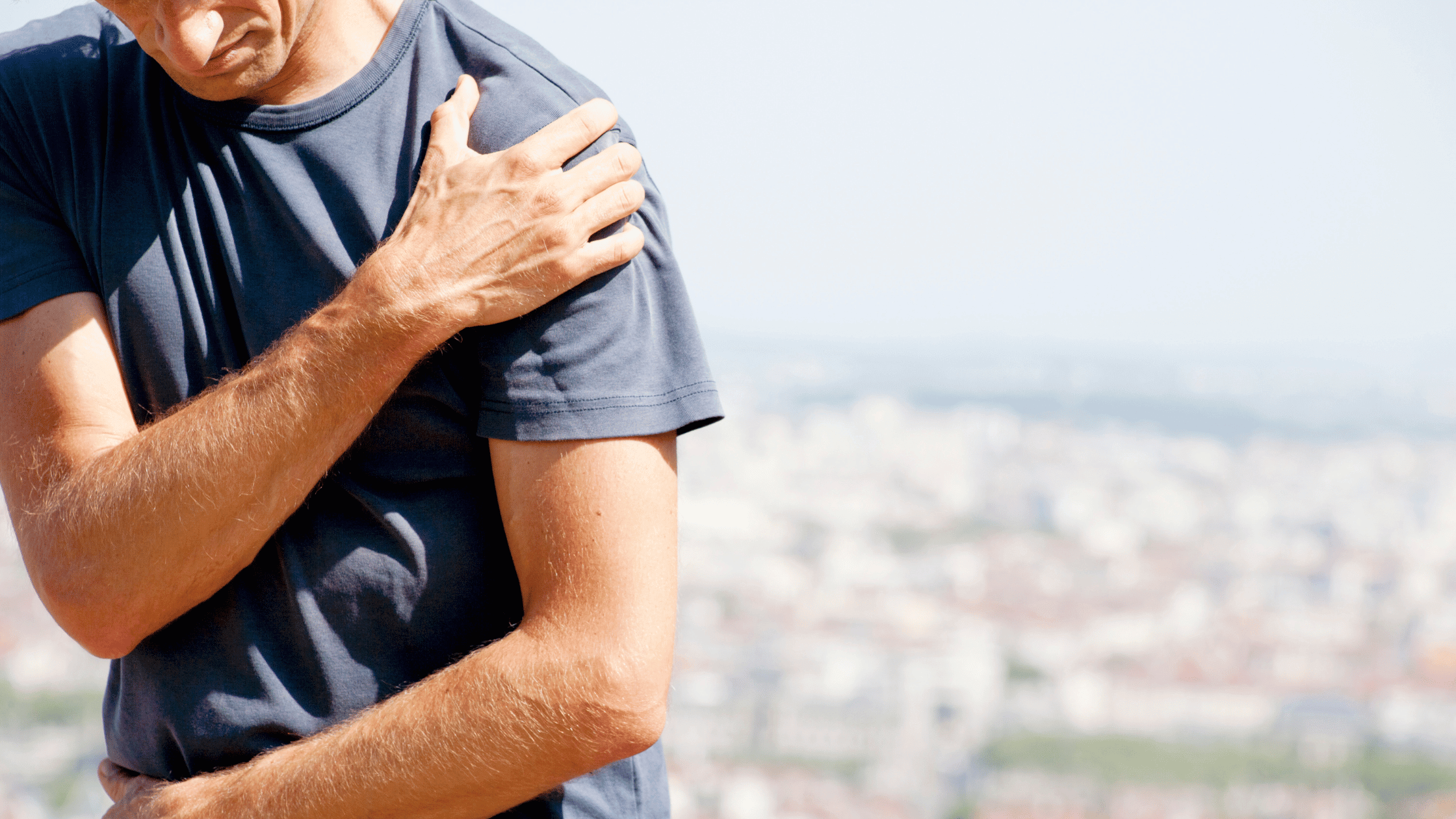Rotator Cuff vs. Labrum Repair: Comparing Procedures, Recovery, and Physical Therapy’s Role

Licensed Physical Therapist, PT, DPT // Dry Needling Certified // Titleist Performance Institute Certified // Director of Player Development, EW Golf // EW Motion Therapy Homewood // EW Motion Therapy Trussville
Shoulder injuries can significantly impact your daily life, making even simple tasks challenging. Pain and stiffness can cause a lack of mobility, but this is not something to ignore - sometimes shoulder surgery is the best solution for severe injuries. Understanding the differences between rotator cuff and labrum repair is vital for anyone facing shoulder surgery. Our team at EW Motion Therapy helps our patients prepare for and recover from multiple types of shoulder surgeries, and we help you return to your favorite activities. Even if you decide not to do physical therapy with us, if you are facing the possibility of shoulder surgery, read on to learn the specifics of each procedure, average recovery timelines, and the crucial role of physical therapy in both pre-and post-operative care.
Understanding the shoulder: anatomy 101
Before comparing the two procedures, it's essential to understand the shoulder's anatomy. The shoulder is a ball-and-socket joint where the humerus (upper arm bone) fits into the scapula (shoulder blade). Two critical structures in this joint are the rotator cuff and the labrum.
The rotator cuff is a group of muscles and tendons that stabilize the shoulder and enable various arm movements. When one or more of these tendons are torn, it can lead to pain, weakness, and reduced range of motion. The labrum is a ring of cartilage that forms a cup for the ball of the arm bone to fit into. It helps stabilize the joint; tears here can result from injury or wear and tear. This can lead to pain, clicking, or a sense of instability in the shoulder.
The surgical procedures
Both rotator cuff and labrum repairs aim to restore stability, function, and strength to the shoulder, but they address different problems through distinct techniques.
Rotator cuff repair
Rotator cuff repair surgery is a medical procedure aimed exclusively at repairing the torn tendons of the rotator cuff in the shoulder. This surgery can be performed using different methods: open repair, where a large incision is made, and the shoulder muscle is detached to gain access to the torn tendon; arthroscopic repair, which uses small incisions and a camera to guide miniature surgical instruments; and mini-open repair, combining arthroscopic techniques with a smaller incision than the traditional open repair. The goal is to reattach the torn tendon to the humerus (upper arm bone). Surgeons use sutures and sometimes anchors to secure the tendon to the bone. This procedure is essential for restoring the shoulder's stability and function, especially in cases where non-surgical treatments have failed to provide relief or in active individuals wanting to maintain a high level of activity.
Labrum repair
Labral repair surgery is a specialized procedure to fix tears in the labrum, a cuff of cartilage encircling the shoulder joint's socket. It's typically done arthroscopically, meaning the surgeon uses small incisions and a camera (arthroscope) to guide tiny surgical instruments. The essence of the surgery lies in reattaching the torn labrum to the bone of the shoulder socket. This is often achieved using suture anchors, small devices that hold the labrum against the bone to facilitate healing. This procedure aims to restore stability to the shoulder joint, address pain, and prevent ongoing or future joint issues. It's particularly vital for resolving symptoms like joint instability, persistent pain, or limited range of motion. The technique is minimally invasive, which usually results in a faster recovery and less postoperative pain compared to open surgical methods.
Average recovery timelines
Recovery timelines can vary significantly based on the injury's extent, the specific procedure, and the individual's health and age.
Recovery from rotator cuff repair generally takes 4 to 6 months. Patients may need to wear a sling for 4 to 6 weeks and avoid active shoulder movement. Gradual reintroduction of movement and strengthening exercises is crucial.
Labrum repair recovery can also take around 4 to 6 months, with the first few weeks involving limited movement to allow the labrum to heal back to the bone. Physical therapy plays a crucial role in regaining full function.
The role of physical therapy: pre- and post-surgery
Physical therapy is crucial both before and after surgery, helping to ensure a quicker and more effective recovery.
Pre-surgical physical therapy
Physical therapy before labrum or rotator cuff surgery, commonly called "prehabilitation" or “prehab,” is crucial in optimizing surgical outcomes. Firstly, it strengthens the muscles around the shoulder joint, providing better support and stability. This pre-operative strengthening can lead to a more successful surgical procedure and potentially a quicker recovery. Secondly, physical therapy helps maintain as much range of motion as possible before surgery, which can be beneficial during the post-surgical rehabilitation process.
Additionally, patients who undergo prehab often have a better understanding of the exercises they will need to perform post-surgery, leading to a smoother and more effective rehabilitation process. Prehab also mentally prepares patients for post-operative therapy as they become familiar with the exercises and the physical therapy regimen. Physical therapy before labrum or rotator cuff surgery is instrumental in enhancing recovery speed, improving post-surgical outcomes, and reducing overall rehabilitation time.
Post-surgical physical therapy
Post-operative rehabilitation following labrum or rotator cuff surgery is a critical component of the recovery process. This physical therapy is essential for several reasons. First and foremost, it aids in restoring strength and flexibility to the shoulder muscles and joints. After surgery, muscles and tendons can be weakened or tight and targeted exercises help to gradually rebuild strength and improve range of motion. Secondly, physical therapy reduces pain and swelling, common post-surgical symptoms. Through various modalities like ice, heat, and gentle exercises, physical therapists can help manage these symptoms effectively.
Another key aspect of post-operative rehabilitation is preventing scar tissue formation and joint stiffness. Consistent and guided movements during therapy sessions ensure that the shoulder does not become stiff and that scar tissue forms in a way that does not impede joint movement. Moreover, rehabilitation provides patients with the education and tools needed to avoid re-injury and to understand the limitations and timelines of their recovery. This knowledge helps patients set realistic expectations and work progressively towards regaining full shoulder function. Post-operative rehabilitation is indispensable for a successful recovery, enabling patients to return to their daily activities and maintain the long-term health of their shoulder joint.
Making an informed decision
When facing the prospect of shoulder surgery, being well-informed is crucial. Understanding the differences between rotator cuff and labrum repair, the recovery process, and the role of physical therapy will help you make the best decision for your health and well-being.
Remember, the information here is only a starting point for a conversation with your care team. Always consult with healthcare professionals, including your surgeon and physical therapist, to clearly understand your options and what to expect. You should also think about your lifestyle, activities, and goals. Discuss these with your care team to ensure the treatment plan aligns with your needs and aspirations.
Whether you're considering rotator cuff or labrum repair, understanding each procedure, the recovery timeline and the role of physical therapy is essential. Remember, you're not alone in this; with the right information and support, you can make a well-informed decision and take the first step toward a pain-free life. At EW Motion Therapy, we're dedicated to providing comprehensive care and education to help you navigate your journey to recovery. Our therapists are experienced in guiding patients through pre- and post-surgical rehabilitation, ensuring you receive the support you need to return to your favorite activities pain-free. If you want to learn more about how physical therapy can help your overall wellness, click the button below to download our answers to 20 frequently-asked questions.


